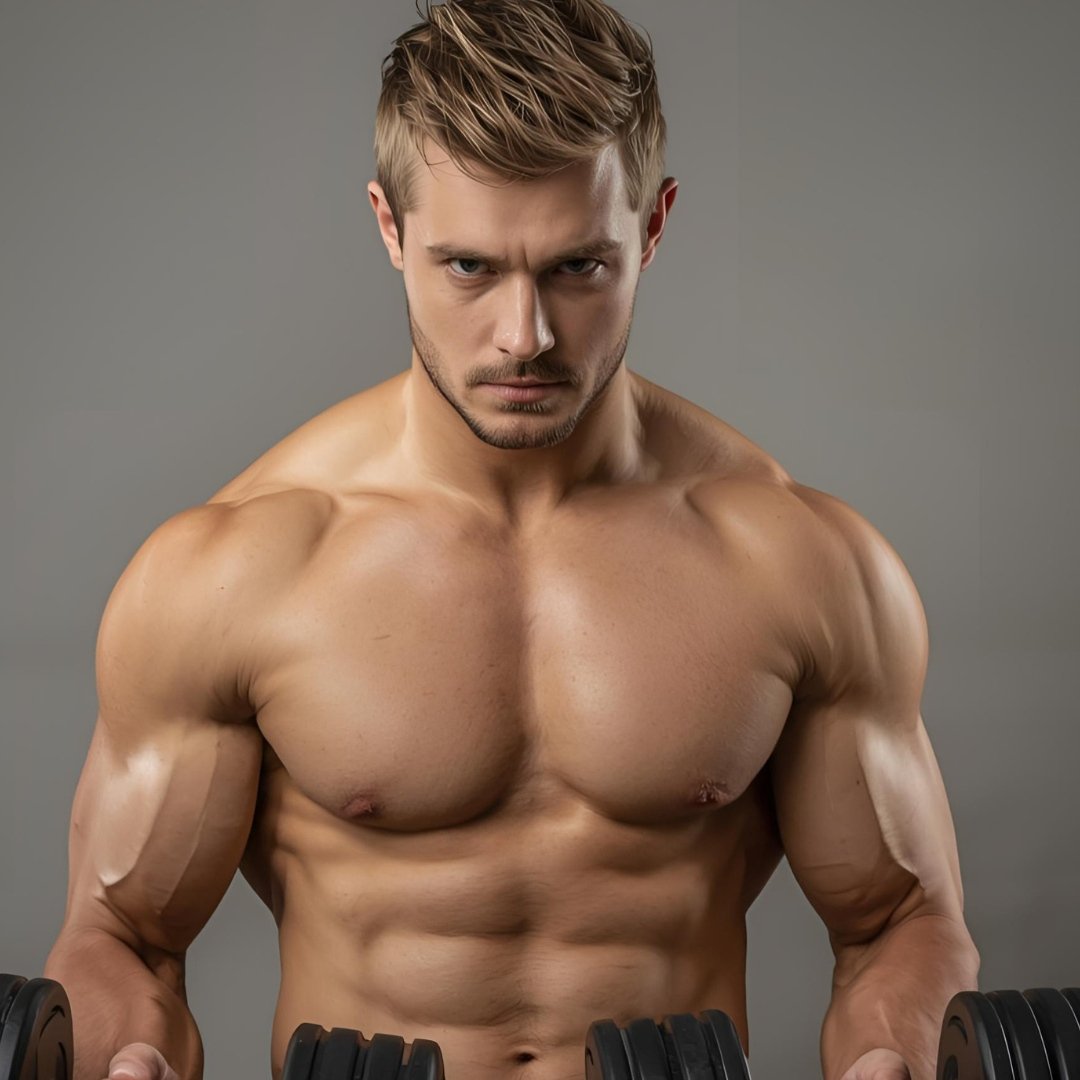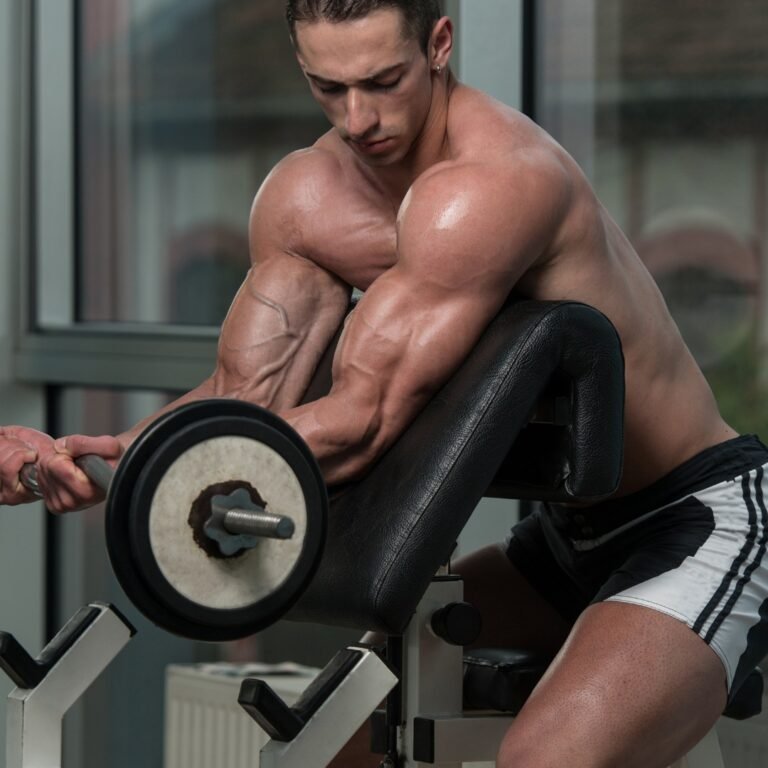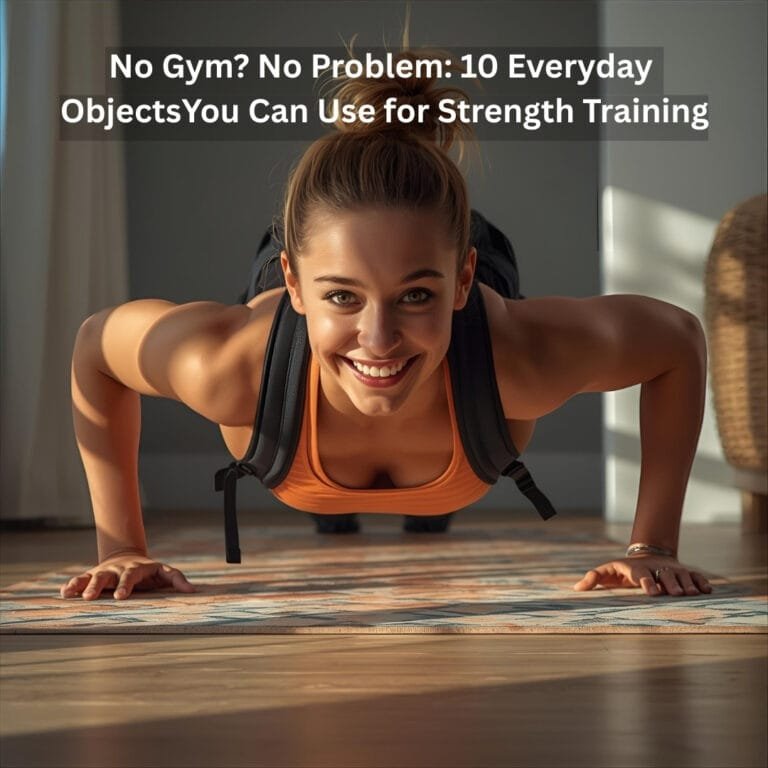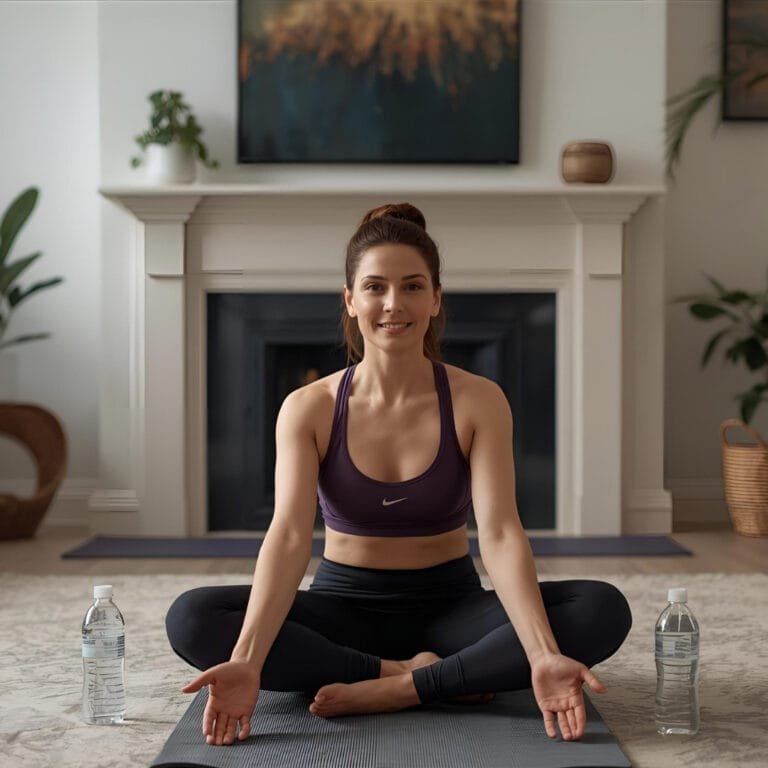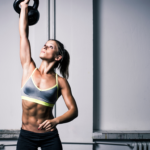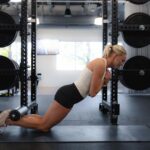Disclosure:
Thank you for reading this post, don't forget to subscribe!
Some of the links on this website are affiliate links. This means that if you click on the link and make a purchase, we may receive a small commission at no extra cost to you. Your support helps us keep the site running.Learn more on my Privacy Policy and Affiliate Disclosure page. Thank you for your support!
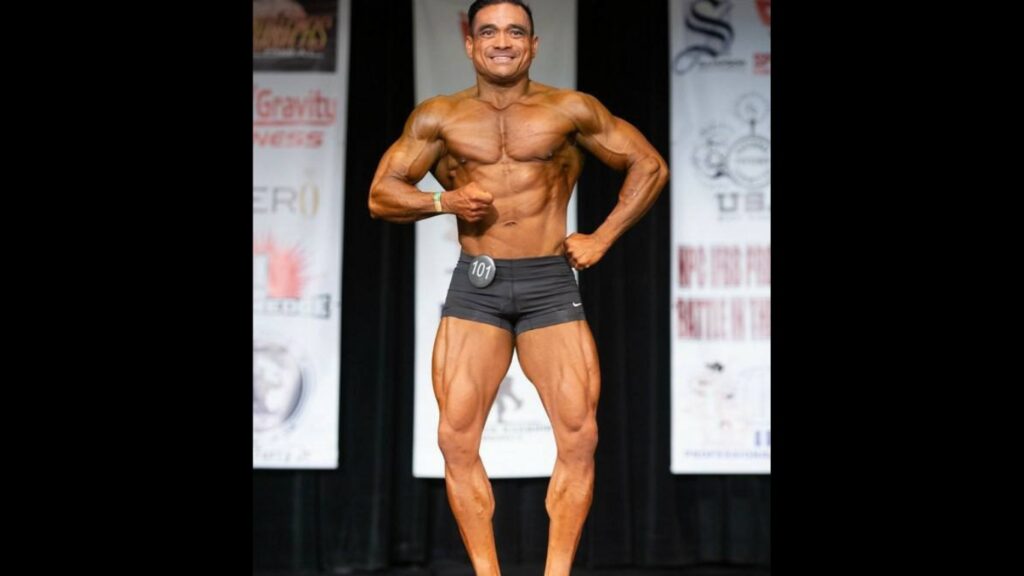
How I Built a Strong Chest with Sean’s Guidance
Building a strong chest has been a transformative part of my fitness journey, thanks to the help and guidance of my friend Sean Sangalang, a seasoned competitive bodybuilder. Sean has competed extensively in bodybuilding, and I have always looked up to him for his dedication and expertise. Under his mentorship, I learned the importance of developing a well-rounded chest, not just for aesthetics but for improving posture, enhancing athletic performance, and achieving balanced muscle growth. Sean introduced me to a chest workout routine that effectively targets the upper, middle, and lower chest.Over the years, through trial and error guidance from seasoned competitive bodybuilder.Here’s my personal story and guide to the top 10 exercises that, with Sean’s expert advice, have helped me build a powerful and defined chest, and can help you do the same.
Benefits of a Strong Chest
The benefits of developing a strong chest are multifaceted. From improving posture to enhancing overall upper body strength, the chest muscles play a pivotal role. A well-developed chest can significantly enhance your physical appearance, making clothes fit better and boosting your confidence. Functionally, the chest muscles are involved in many daily activities and movements, such as pushing, lifting, and even breathing. A strong chest supports these movements, making them more efficient and reducing the risk of injury.
Check out: Sean Sangalang 2007 NPC Sacramento Championships-Sacramento California.
In my own experience, focusing on chest exercises transformed my workouts. Initially, I made the mistake of performing the same exercises repeatedly, targeting only one area of the chest. This approach led to imbalances and limited progress. It wasn’t until I began incorporating a variety of exercises that targeted the upper, middle, and lower chest that I saw significant improvements.
Developing a strong chest offers numerous benefits beyond just looking good. Here are some key advantages:
- Aesthetics: A well-defined chest can enhance your overall physique, making you look more muscular and fit. It can improve your posture and make your upper body appear broader.
- Functionality: Strong chest muscles are crucial for performing everyday tasks that involve pushing and lifting. This includes activities like pushing a heavy door, lifting groceries, or performing household chores.
- Posture: Strengthening your chest muscles helps improve your posture by balancing the muscles in your upper body. This can reduce the risk of back pain and other postural issues.
- Upper Body Strength: A strong chest contributes to overall upper body strength, enhancing your performance in various sports and physical activities. It can also improve your endurance and stamina.
Brief Overview of Different Types of Chest Exercises
Chest exercises can be categorized into different types based on the equipment used and the areas of the chest they target. Here are the main types:
- Bodyweight Exercises: These exercises use your body weight as resistance and are great for building strength without the need for equipment. Examples include push-ups and dips.
- Dumbbell Exercises: Dumbbells provide a wide range of motion and allow for unilateral training, helping to correct muscle imbalances. Examples include dumbbell bench press and flyes.
- Barbell Exercises: Barbell exercises are ideal for lifting heavier weights and building overall strength. Examples include the barbell bench press and incline bench press.
- Machine Exercises: Machines offer guided movements, making them great for beginners or those recovering from injuries. Examples include the chest press machine and pec deck machine.
discover: 10 Week Chest Size & Bench Press Strength Workout -muscle & strength.
Importance of Targeting All Areas of the Chest
To develop a well-rounded chest, it’s essential to target all areas: upper, middle, and lower chest. Focusing on one area can lead to imbalances and limited progress. Here’s why targeting each area is important:
- Upper Chest: Exercises that target the upper chest help create a fuller and more balanced look. They also contribute to overall upper body strength.
- Middle Chest: Targeting the middle chest helps build overall mass and definition. It’s crucial for developing a well-proportioned chest.
- Lower Chest: Strengthening the lower chest adds depth and definition to your chest muscles, creating a more sculpted appearance.
Top 10 Chest Exercises: A Comprehensive Breakdown
1. Barbell Bench Press
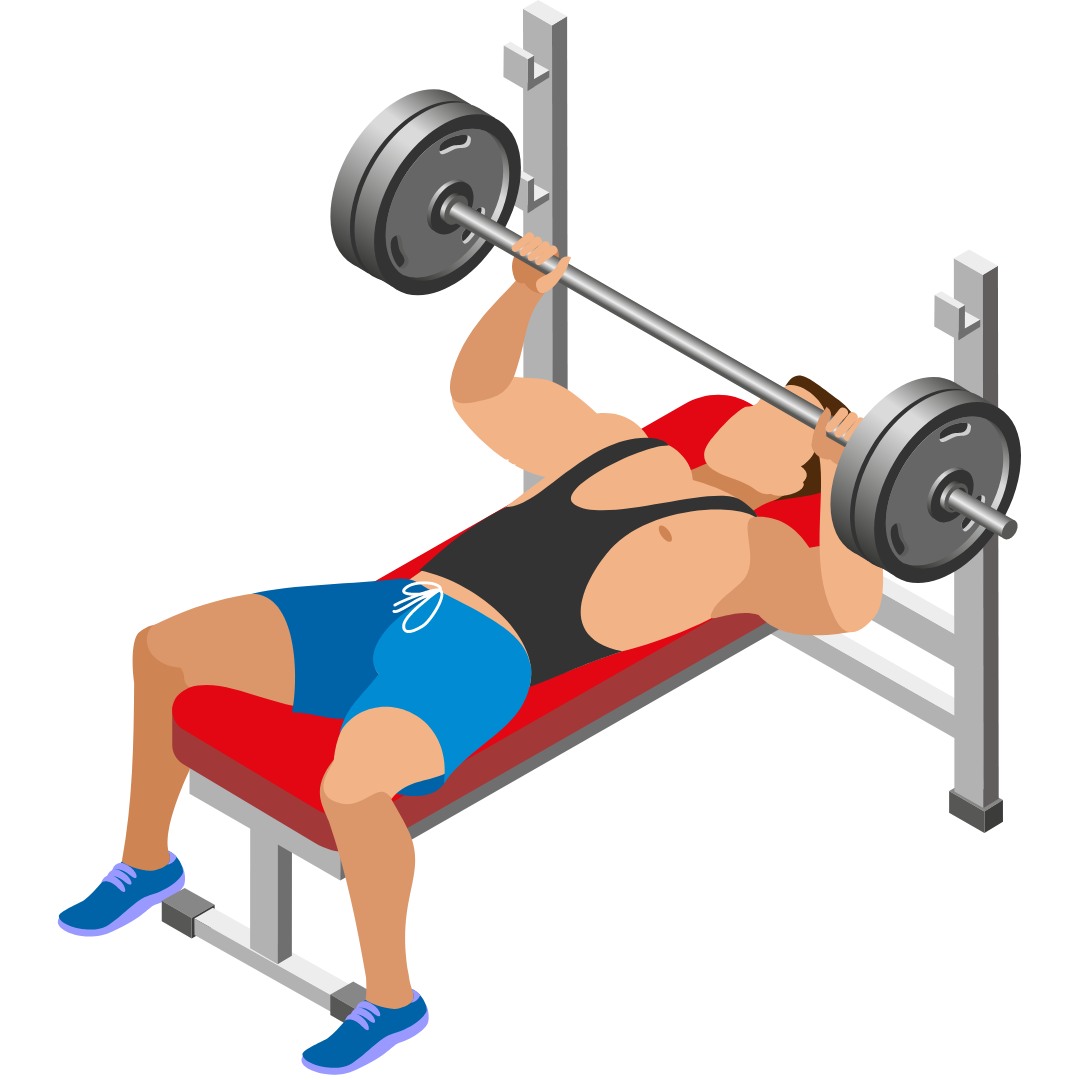
The barbell bench press has been a cornerstone of my chest workout. It’s a powerful exercise that targets the pectoralis major and engages the triceps and deltoids.
Step-by-Step Instructions
- Lie flat on a bench with your feet firmly planted on the ground.
- Grip the barbell with hands slightly wider than shoulder-width apart.
- Lower the bar to your chest, keeping your elbows at a 45-degree angle.
- Press the bar back up to the starting position.
Muscles Worked
- Primary: Pectoralis major
- Secondary: Triceps, deltoids
Benefits and Variations
- Benefits: Increases upper body strength and muscle mass.
- Variations: Incline bench press, decline bench press.
Common Mistakes and Safety Tips
- Mistake: Arching your back excessively.
- Tip: Maintain a natural arch and keep your core tight.
read more about: The Top 10 Exercises For Improving Men’s Health and Wellness
2. Dumbbell Bench Press
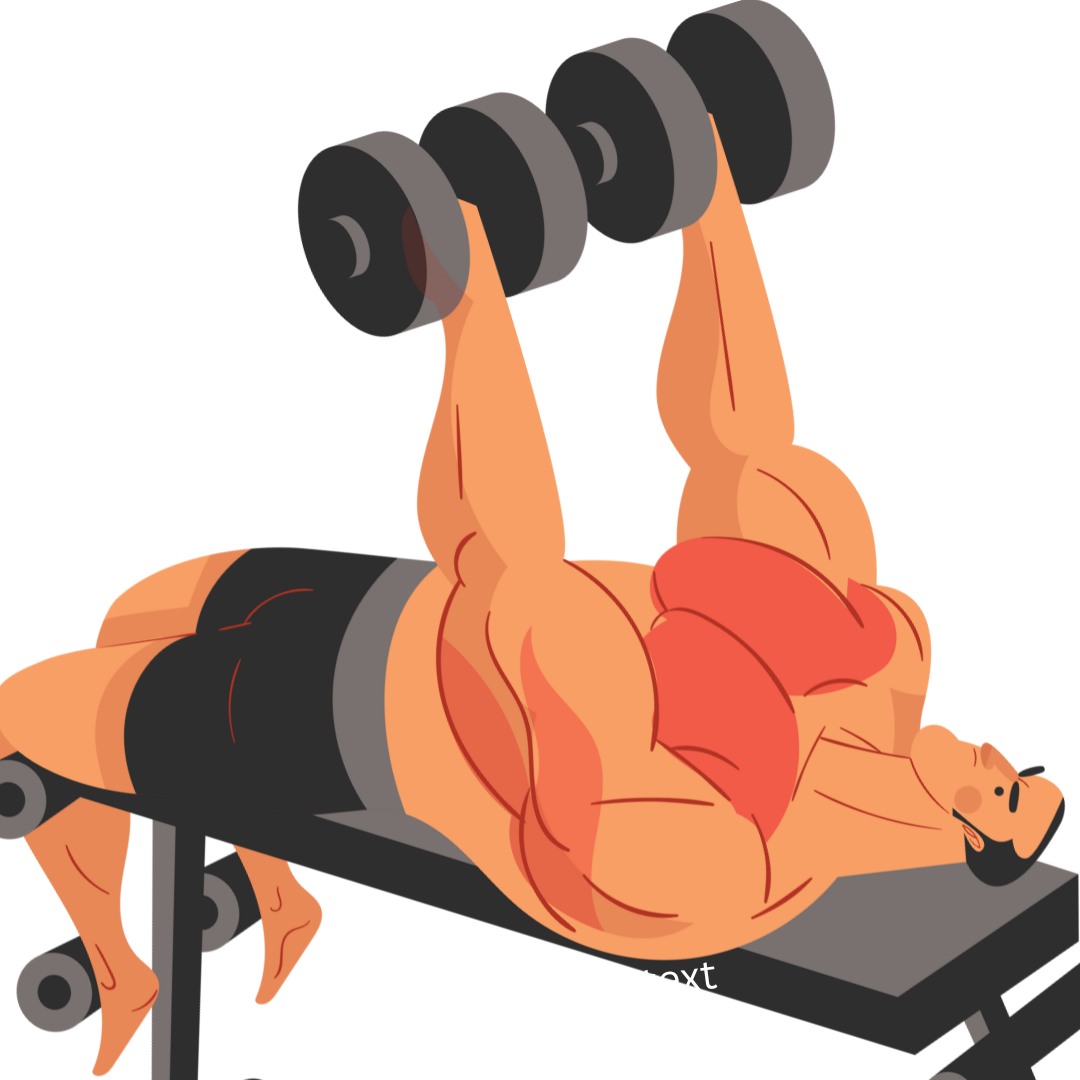
Incorporating the dumbbell bench press into my routine has allowed me to achieve greater muscle activation due to the increased range of motion.
Step-by-Step Instructions
- Lie on a bench with a dumbbell in each hand.
- Hold the dumbbells above your chest with your palms facing forward.
- Lower the dumbbells to the sides of your chest.
- Press the dumbbells back up to the starting position.
Muscles Worked
- Primary: Pectoralis major
- Secondary: Triceps, deltoids
Benefits and Variations
- Benefits: Improves muscle symmetry and balance.
- Variations: Incline dumbbell press, decline dumbbell press.
Common Mistakes and Safety Tips
- Mistake: Allowing the dumbbells to drift too far apart.
- Tip: Keep your wrists neutral and controlled.
find out more about: Dumbbell Flyes Great accessory movement on chest day-Bodybuilding.Com.
3. Push-Ups
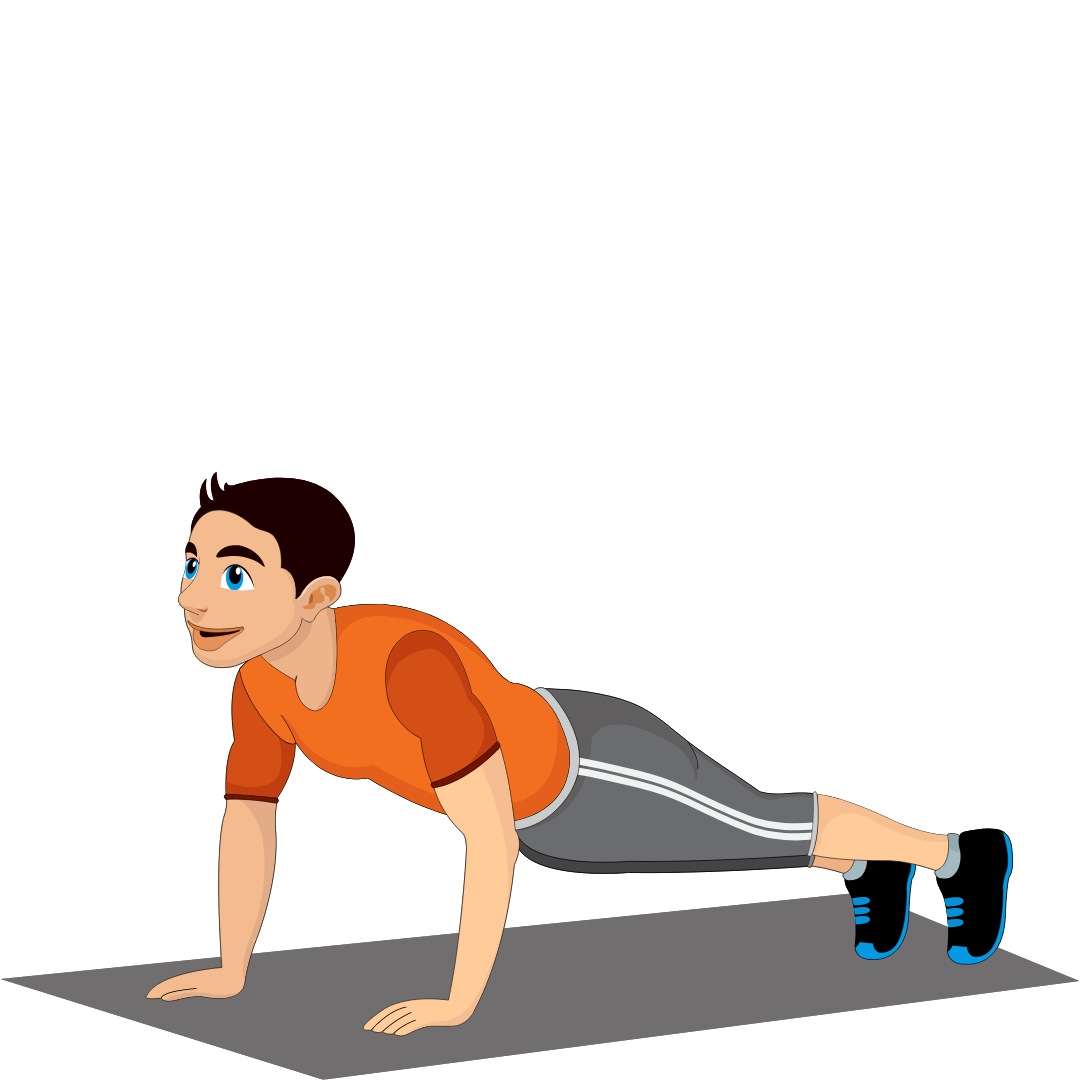
Push-ups have always been a reliable go-to exercise for me. They are versatile and can be done anywhere, providing an effective bodyweight chest exercise.
Step-by-Step Instructions
- Start in a plank position with your hands shoulder-width apart.
- Lower your body until your chest almost touches the floor.
- Push back up to the starting position.
Muscles Worked
- Primary: Pectoralis major
- Secondary: Triceps, deltoids, core
Benefits and Variations
- Benefits: Builds strength and endurance.
- Variations: Incline push-ups, decline push-ups, diamond push-ups.
Common Mistakes and Safety Tips
- Mistake: Sagging your hips.
- Tip: Engage your core to maintain a straight line from head to heels.
4. Incline Bench Press
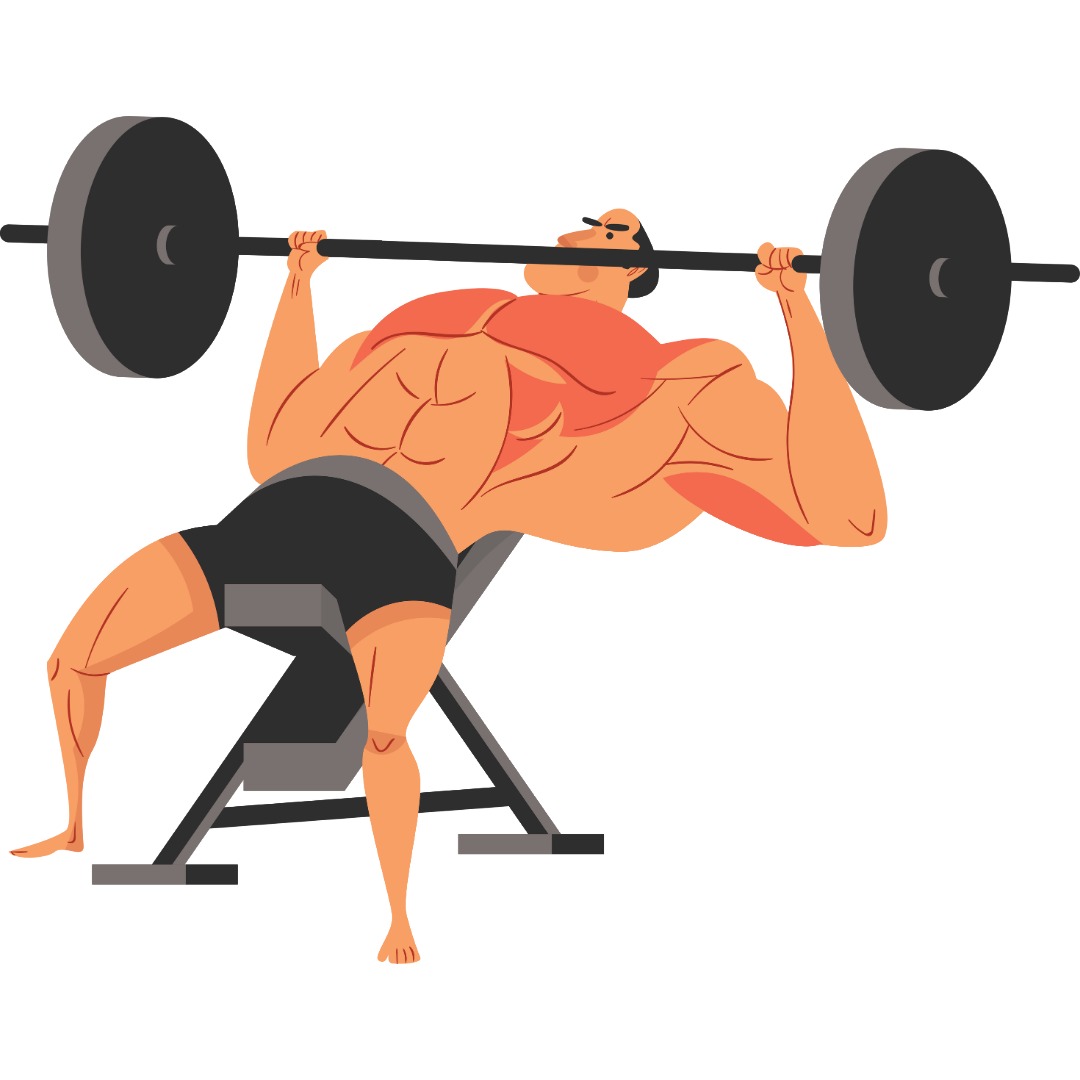
To target my upper chest, I rely on the incline bench press. This exercise has been crucial in creating a well-rounded chest appearance.
Step-by-Step Instructions
- Set the bench to a 30-45 degree angle.
- Perform the bench press as described above with the bench inclined.
Muscles Worked
- Primary: Upper pectoralis major
- Secondary: Triceps, deltoids
Benefits and Variations
- Benefits: Emphasizes the upper chest.
- Variations: Incline dumbbell press.
Common Mistakes and Safety Tips
- Mistake: Using too steep an incline.
- Tip: Keep the incline moderate to target the upper chest effectively.
Further Reading: How To Create A Customized Workout Plan-Customizing your workouts can lead to better results and a heightened sense of personal accomplishment.
5. Decline Bench Press
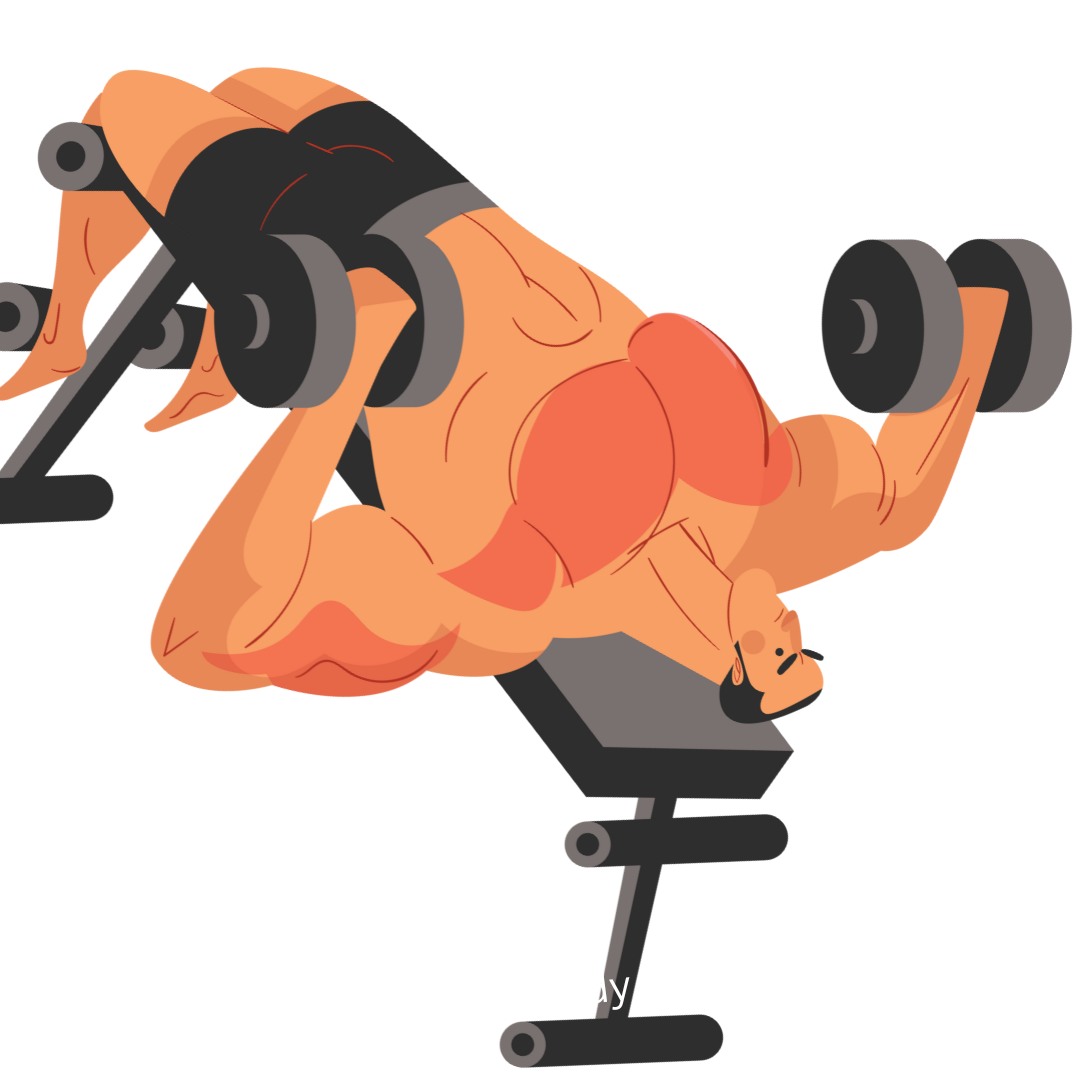
The decline bench press has helped me focus on my lower chest, adding depth and definition to my chest muscles.
Step-by-Step Instructions
- Set the bench to a decline position.
- Perform the bench press as described above with the bench declined.
Muscles Worked
- Primary: Lower pectoralis major
- Secondary: Triceps, deltoids
Benefits and Variations
- Benefits: Enhances lower chest development.
- Variations: Decline dumbbell press.
Common Mistakes and Safety Tips
- Mistake: Not securing your feet properly.
- Tip: Use the foot anchors to maintain stability.
EXPLORE MORE:
6. Chest Flyes
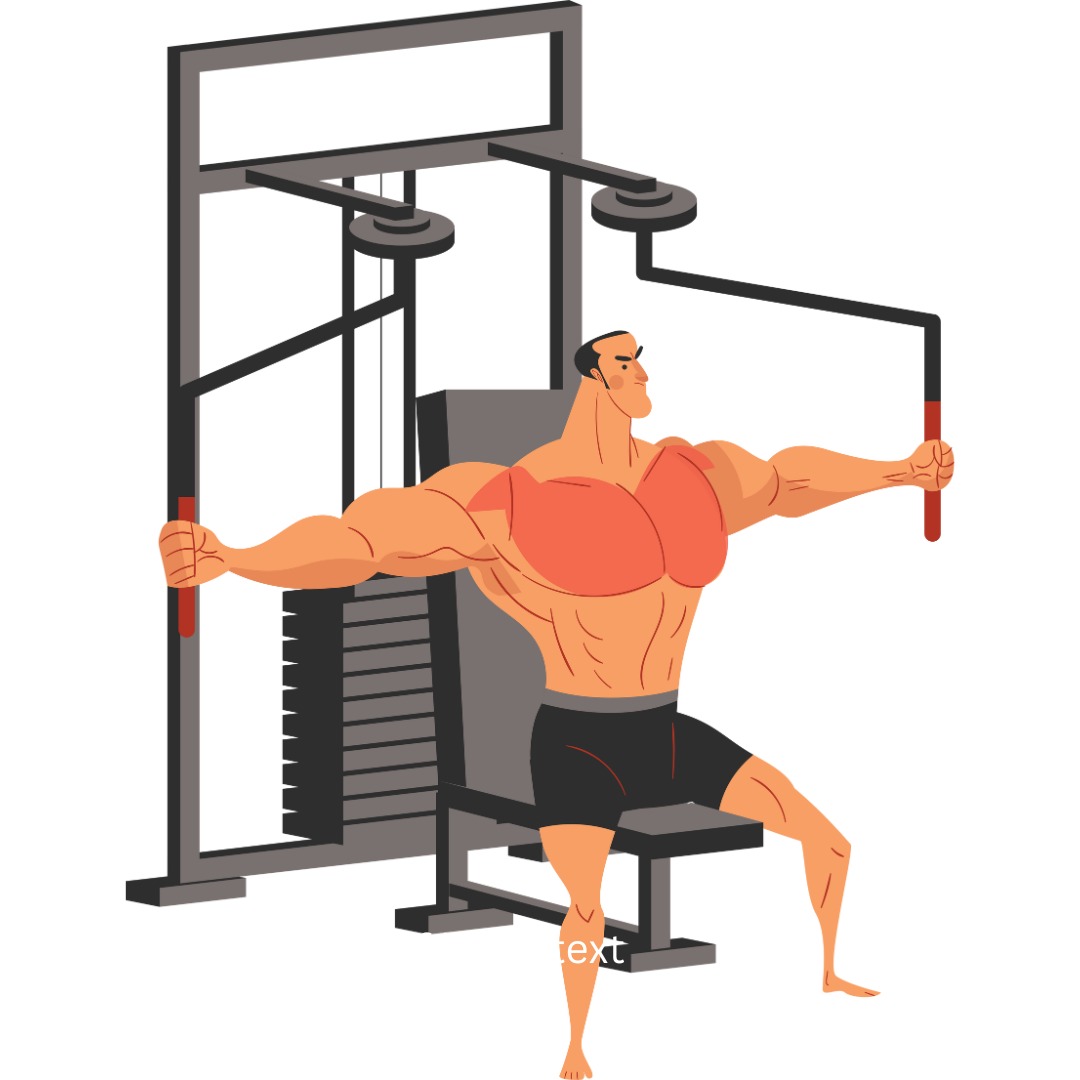
Adding chest flyes to my routine has allowed me to isolate the chest muscles and achieve a great stretch and contraction.
Step-by-Step Instructions
- Lie on a bench with a dumbbell in each hand.
- Extend your arms above your chest with a slight bend in your elbows.
- Lower the dumbbells in an arc until they are level with your chest.
- Bring the dumbbells back to the starting position.
Muscles Worked
- Primary: Pectoralis major
- Secondary: Deltoids
Benefits and Variations
- Benefits: Improves muscle definition and flexibility.
- Variations: Incline flyes, decline flyes, cable flyes.
Common Mistakes and Safety Tips
- Mistake: Bending your elbows too much.
- Tip: Keep a slight bend to protect your elbows and shoulders.
7. Cable Crossovers
Cable crossovers have been excellent for providing continuous tension, making them effective for chest isolation.
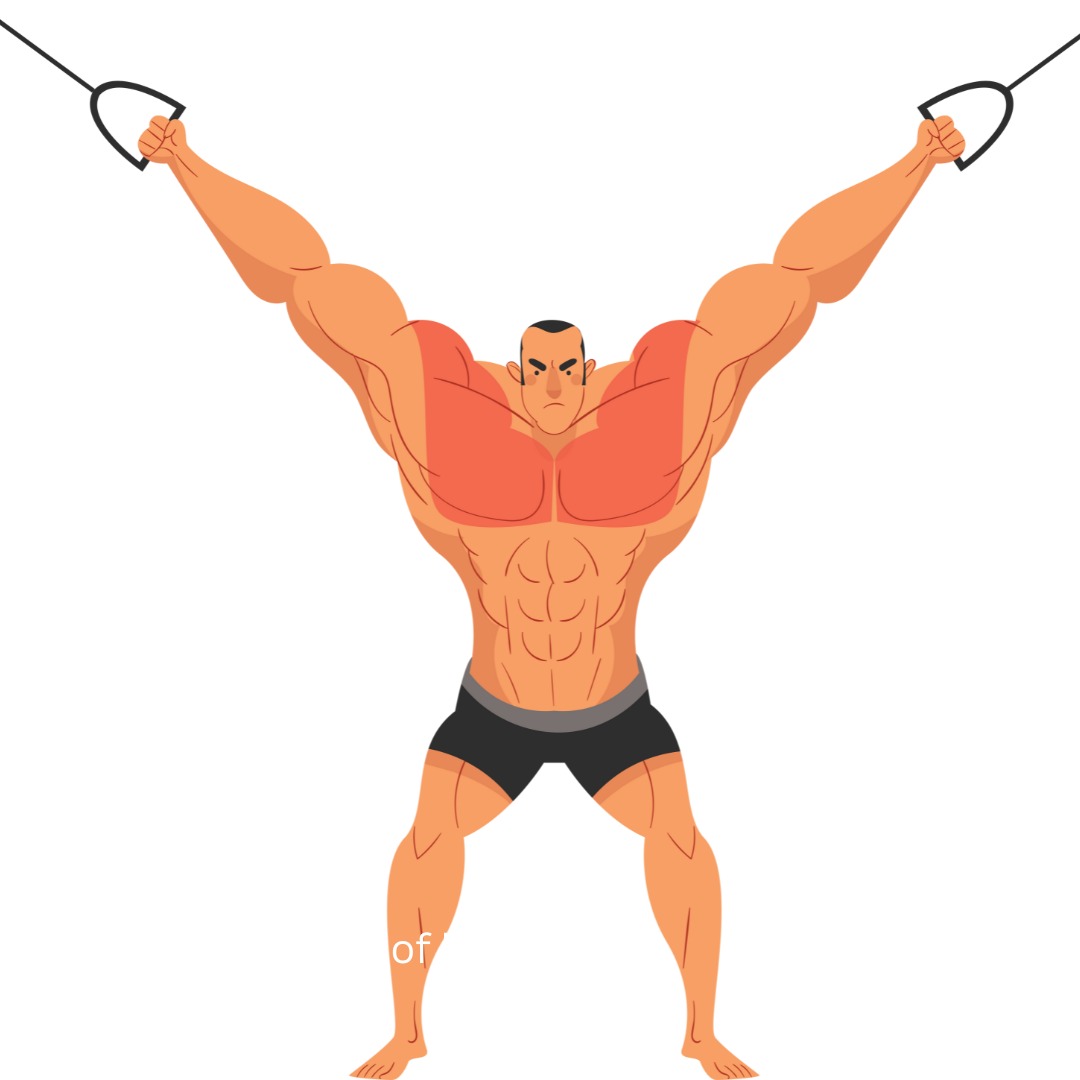
Step-by-Step Instructions
- Stand between two cable machines with the handles set at chest height.
- Grab the handles and step forward, keeping a slight bend in your elbows.
- Bring your hands together in front of your chest.
- Return to the starting position with control.
Muscles Worked
- Primary: Pectoralis major
- Secondary: Deltoids
Benefits and Variations
- Benefits: Enhances muscle symmetry and definition.
- Variations: High cable crossovers, low cable crossovers.
Common Mistakes and Safety Tips
- Mistake: Using too much weight and swinging the cables.
- Tip: Use a weight that allows for controlled movement.
8. Dips
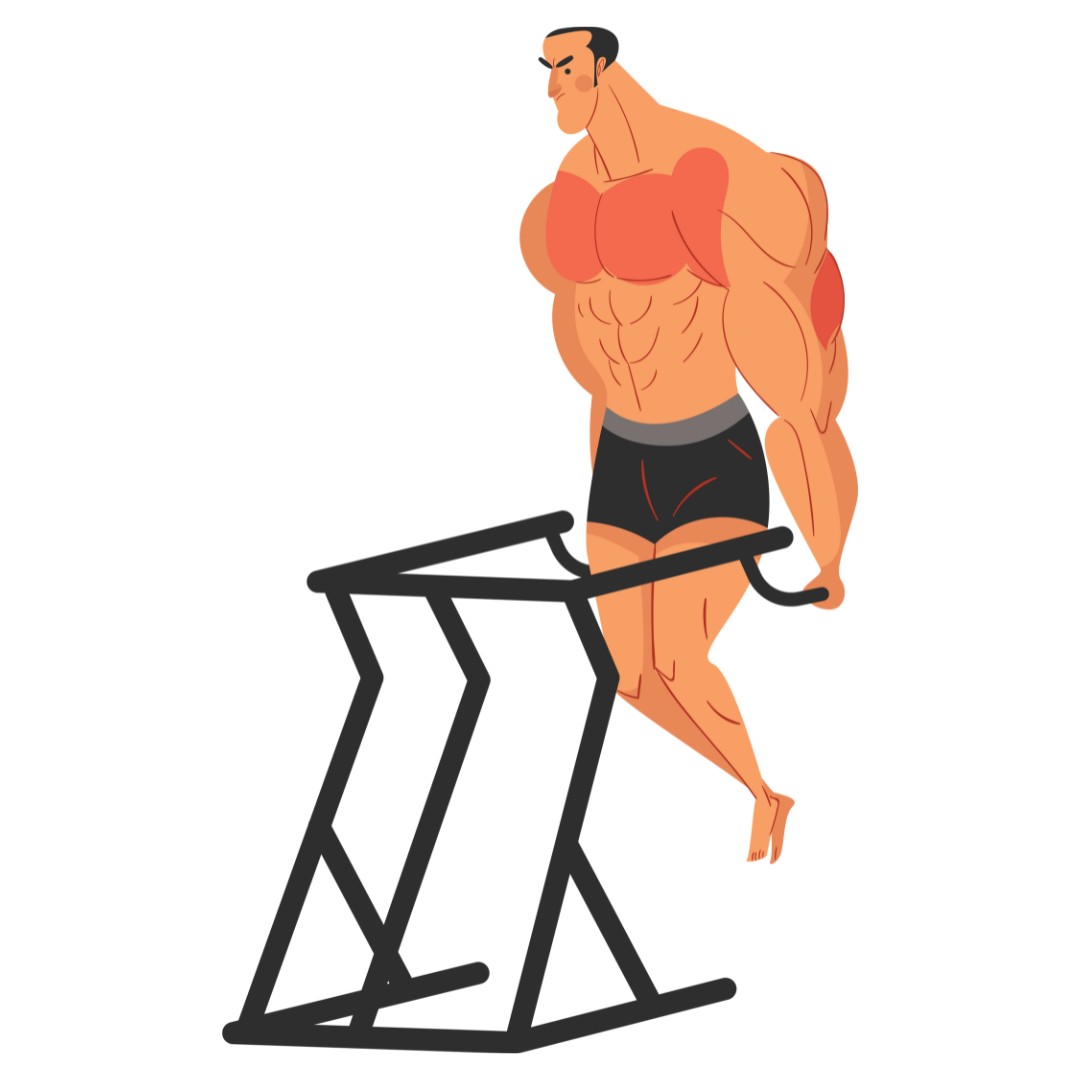
Dips are a fantastic compound exercise that works the chest, triceps, and shoulders, contributing significantly to my upper body strength.
Step-by-Step Instructions
- Grasp the parallel bars and lift your body.
- Lean slightly forward to engage the chest.
- Lower your body until your elbows are at a 90-degree angle.
- Push back up to the starting position.
Muscles Worked
- Primary: Pectoralis major
- Secondary: Triceps, deltoids
Benefits and Variations
- Benefits: Builds upper body strength and muscle mass.
- Variations: Weighted dips, bench dips.
Common Mistakes and Safety Tips
- Mistake: Not leaning forward enough.
- Tip: Keep a forward lean to emphasize the chest.
9. Machine Chest Press
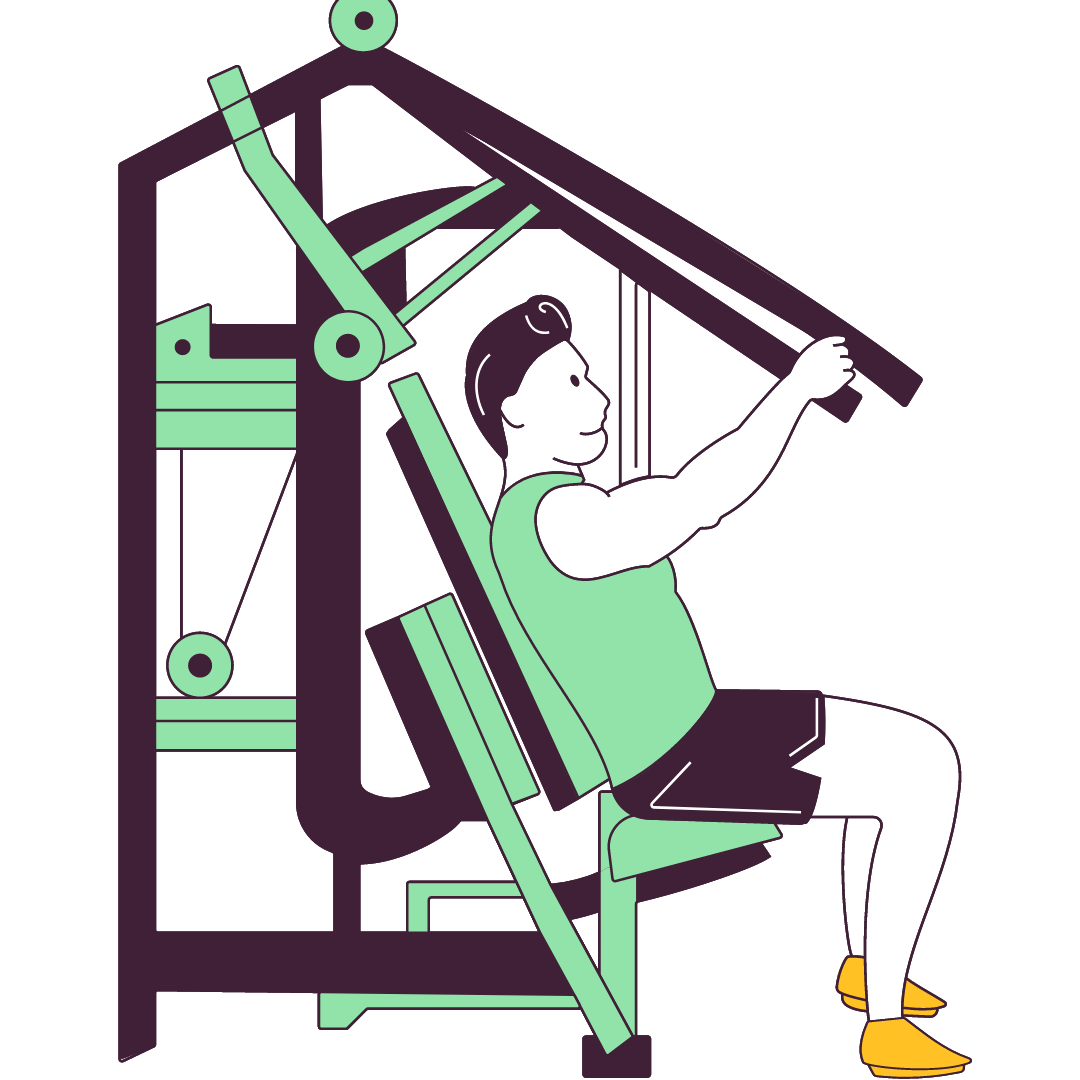
I often use the machine chest press for its guided motion, making it a safe and effective exercise, especially on days when I’m feeling fatigued.
Step-by-Step Instructions
- Sit on the machine with your back against the pad.
- Grip the handles and press them forward.
- Return to the starting position with control.
Muscles Worked
- Primary: Pectoralis major
- Secondary: Triceps, deltoids
Benefits and Variations
- Benefits: Easy to use and reduces injury risk.
- Variations: Incline machine press, decline machine press.
Common Mistakes and Safety Tips
- Mistake: Using too much weight.
- Tip: Start with a manageable weight and focus on form.
10. Pec Deck Machine
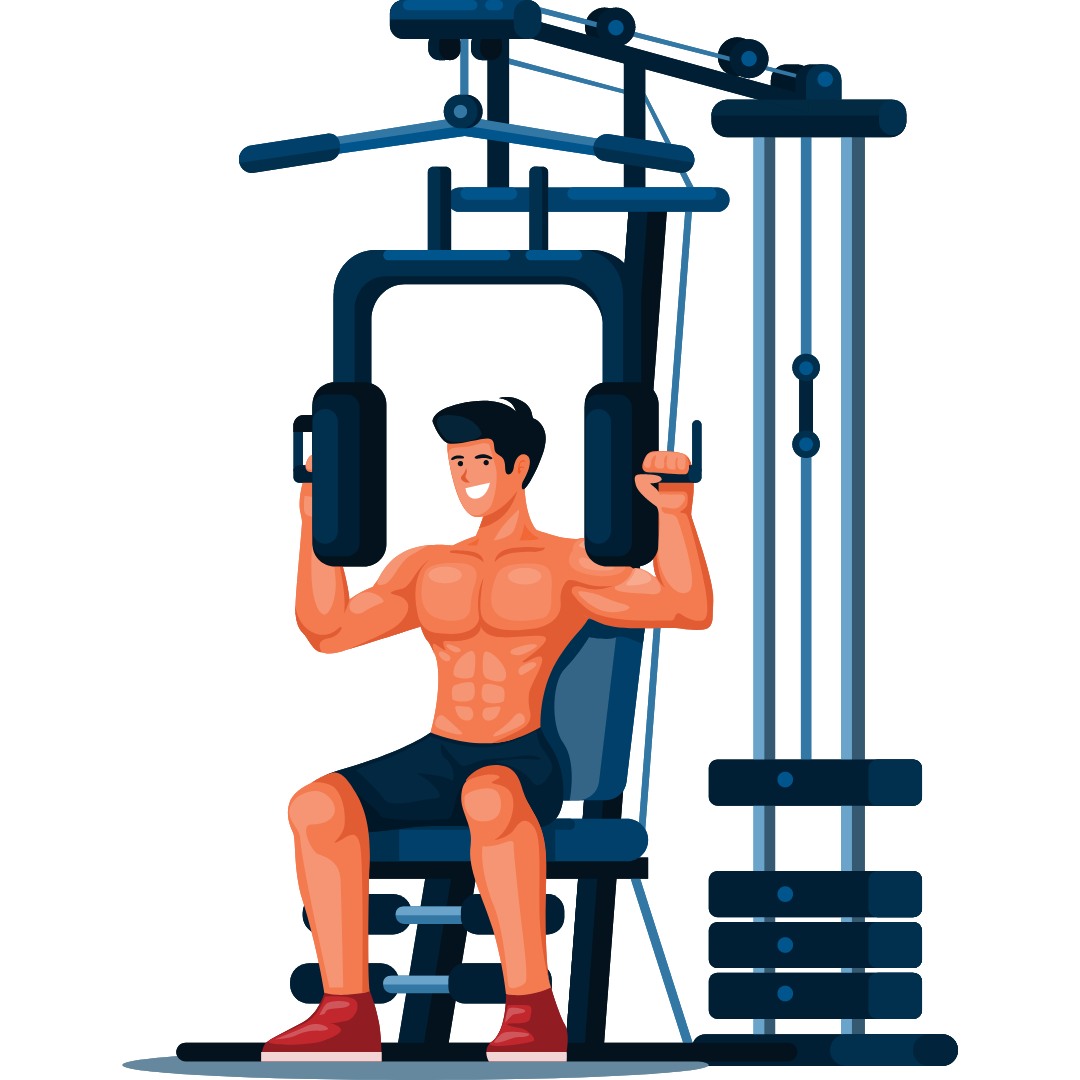
I finish my chest workouts with the pec deck machine to isolate the chest muscles and achieve an excellent contraction.
Step-by-Step Instructions
- Sit on the machine with your back against the pad.
- Place your arms on the pads with elbows slightly bent.
- Bring the pads together in front of your chest.
- Return to the starting position with control.
Muscles Worked
- Primary: Pectoralis major
- Secondary: Deltoids
Benefits and Variations
- Benefits: Provides an excellent chest contraction.
- Variations: Single-arm pec deck, varying the angle.
Common Mistakes and Safety Tips
- Mistake: Rushing through the movement.
- Tip: Use a controlled tempo for better muscle engagement.
Crafting the Perfect Chest Workout Routine
Creating an effective chest workout routine has been crucial in my fitness journey. Balancing different exercises to target all areas of the chest promotes consistent muscle growth.
Sample Routines
Beginners
- Barbell Bench Press: 3 sets of 10 reps
- Dumbbell Bench Press: 3 sets of 10 reps
- Push-Ups: 3 sets to failure
Intermediate
- Incline Bench Press: 4 sets of 8 reps
- Decline Bench Press: 4 sets of 8 reps
- Chest Flyes: 3 sets of 12 reps
- Cable Crossovers: 3 sets of 15 reps
Advanced
- Dumbbell Bench Press: 4 sets of 6 reps
- Incline Dumbbell Press: 3 sets of 8 reps
- Dips: 4 sets to failure
- Barbell Bench Press: 4 sets of 6 reps
- Machine Chest Press: 3 sets of 12 reps
- Pec Deck Machine: 3 sets of 15 reps
Breakdown of Sets, Reps, Rest Periods, and Frequency
- Sets and Reps: Aim for 3-4 sets of 8-12 reps for each exercise. This range is ideal for building muscle and strength.
- Rest Periods: Rest for 60-90 seconds between sets. This allows your muscles to recover while keeping the intensity high.
- Frequency: Train your chest 1-2 times per week. Ensure you have adequate rest days between sessions to allow for muscle recovery and growth.
Tips for Progression and Adjusting Your Routine Over Time
- Increase Weight: Gradually increase the weight you lift as you get stronger. This progressive overload will promote muscle growth.
- Vary Exercises: Incorporate different exercises to target your chest from various angles. This prevents plateaus and keeps your workouts challenging.
- Adjust Volume: As you progress, increase the number of sets or reps to continue challenging your m
- Gradually increase the weight and intensity.
- Focus on perfecting your form before adding more weight.
- Mix up your routine every 4-6 weeks to prevent plateaus.
Holistic Fitness: How Wellness Practices Are Becoming Part Of The Workout Routine.
Fueling Your Chest Gains: Nutrition and Recovery Tips
Proper nutrition and recovery are essential for muscle growth and overall performance.
Importance of Nutrition
- Protein: Essential for muscle repair and growth. Aim for 1.2-2.2 grams of protein per kilogram of body weight.
- Calories: Ensure a caloric surplus for muscle building.
- Balanced Diet: Include carbohydrates, fats, vitamins, and minerals for optimal health.
Rest and Recovery Strategies
- Sleep: Aim for 7-9 hours of sleep per night.
- Rest Days: Include rest days in your routine to allow muscles to recover.
- Stretching and Foam Rolling: Helps reduce muscle soreness and improve flexibility.
Supplements
- Protein Powder: Convenient way to meet your protein needs.
- Creatine: Enhances strength and muscle mass.
- BCAAs: Supports muscle recovery and reduces muscle soreness.
Beyond the Basics: Maximizing Your Chest Potential
To take your chest training to the next level, consider incorporating advanced training techniques and strategies.
Advanced Training Techniques (Drop Sets, Supersets, Etc.)
- Drop Sets: Perform a set to failure, then reduce the weight and continue until failure again. This technique increases muscle endurance and growth.
- Supersets: Pair two exercises and perform them back-to-back with no rest in between. This increases intensity and time under tension.
- Pyramid Sets: Gradually increase the weight and decrease the reps with each set, then reverse the process. This promotes strength and hypertrophy.
Common Mistakes to Avoid in Chest Training
- Neglecting Warm-Up: Always warm up before your workout to prevent injuries. A proper warm-up increases blood flow to your muscles and prepares your body for exercise.
- Poor Form: Focus on proper form to maximize muscle activation and reduce the risk of injury. Avoid using too much weight if it compromises your form.
- Overtraining: Allow adequate rest between chest workouts to prevent overtraining. Overtraining can lead to injuries and hinder muscle growth.
How to Integrate Chest Exercises into a Full-Body Routine
Recovery: Allow for adequate recovery time between chest workouts to optimize muscle growth.Beyond the Basics: Maximizing Your Chest Potential
Balance: Ensure your workout routine includes exercises for all major muscle groups. This promotes overall strength and prevents imbalances.
Frequency: Train your chest 1-2 times per week as part of a balanced workout routine.
Advanced Training Techniques
- Drop Sets: Perform a set to failure, reduce the weight, and continue.
- Supersets: Pair two exercises back-to-back with minimal rest.
- Pyramids: Increase the weight with each set while decreasing the reps.
Common Mistakes to Avoid
- Overtraining: Ensure you allow adequate rest between chest workouts.
- Poor Form: Focus on technique to prevent injuries.
- Neglecting Other Muscle Groups: Incorporate a balanced training program to avoid imbalances.
Integrating Chest Exercises into a Full-Body Routine
- Combine chest exercises with back, shoulder, and leg exercises for a well-rounded program.
- Ensure your routine allows for adequate recovery between muscle groups.
what to read next:
- Gut Health Decoded: How Your Microbiome Shapes Energy, Mood, and Immunity
- The Science of Stillness: How Doing Nothing Can Heal Your Mind and Body
- Are You a Late-Night Snacker? 5 Possible Reasons Why You Can’t Stop Craving Food at Night
- The Ultimate Fat-Loss + Muscle Retention Blueprint (For Men)
- Smart Biceps Training: A Science-Backed Blueprint for Bigger, Stronger Arms
Your Path to a Powerful Chest
Developing a strong and well-defined chest requires a combination of effective exercises, proper nutrition, and adequate recovery. By targeting all areas of your chest and incorporating a variety of exercises, you can achieve a balanced and sculpted physique.
Remember to listen to your body and adjust your routine as needed. Consistency and dedication are key to seeing progress. Whether you’re a beginner or an advanced lifter, there’s always room for growth and improvement.
Start your chest-building journey today and experience the benefits of a stronger, more defined chest. If you have any questions or need further guidance, feel free to reach out. Together, we can achieve your fitness goals.
I hope you like this article on building a strong chest and finding the top 10 exercises for massive pecs. If you found it helpful, please share it with your friends and fitness community. Your support helps us create more valuable content. Thank you!
more about:
HEALTH / WELLNESS / FITNESS / NUTRITIO



